Table of Contents
Sambhar Lake is known as the largest inland Salt Water Lake in India located 80 km south-west of Jaipur and 64 km north-east of Ajmer. It is fed by 6 rivers namely Mantha, Rupangarh, Khari, Khandela, Mertha, and Samod. It is recognized as a UNESCO World Heritage Site and plays host to a variety of migratory birds, especially flamingos, which make it one of the most visited places in the world. This makes it one of the most visited breeding sites in India for the majestic birds.
Which is the Largest Saltwater Lake in India?
Sambhar Lake is the largest inland Salt Water lake in India, which is spread over about 230 square kilometers in the district of Rajasthan. Rajasthan represents the essence of economic and ecological importance as an important component in the field of salt production.
- Located within an endorheic basin, it acts as a closed drainage system in which, with a collective catchment area of 5700 square kilometers, it drains salt deposits from six tributaries.
- The lake contains only 60 centimeters of water during drought and about 3 meters during the monsoon season.
- Its location, surrounded by the Aravalli hills, gives it a picturesque charm, the circumference of which extends for 96 kilometers.
- Every year, Sambhar Lake produces 196,000 tonnes of ancient salt, which is a significant part of India’s total salt production.
- Its importance goes beyond mere economic value, as evidenced by its designation as a Ramsar site, which is a testament to its international ecological importance.
- The lake serves as an important habitat for innumerable migratory birds, especially thousands of pink flamingos and other species coming from North Asia and Siberia.
History of Sambhar Lake
According to the Indian epic Mahabharata, Sambhar Lake was once part of a kingdom ruled by the demon king Vrishaparva, where his priest Shukracharya lived. Legend has it that Shakambhari Devi, the patron goddess of the Chauhan dynasty and wife of Lord Shiva, transformed the dense forest into a silver field as payment for her service. Concerned about potential greed and conflict with such wealth, the residents urged him to convert the silver grounds into an equivalent, hence the name Sambhar, which is derived from Shakambhari. It is said that this change took place around the sixth century. In 1884, during small-scale excavations at Sambhar Lake, ancient sculptures, terracotta structures, coins, seals, and an earthen stupa were discovered, highlighting the rich historical and cultural significance of the area.
Top 10 Salt Water Lakes in India
Salt lakes are formed by water flows that contain minerals that are unable to flow away due to the lake’s closed drainage system. As water evaporates, salt is deposited, increasing salinity and leading to salt production. High salinity promotes halophilic life, which often limits multicellular organisms. Some salt lakes, called hypersaline, exceed the salinity of the ocean. The “Soft Drink Lakes” are alkaline with high carbonates, earning their name from their chemistry. Here we discuss some saltwater lakes.
| Salt Water Lakes in India | ||
| S.No. | Lake | State |
| 1 | Sambhar Lake | Rajasthan |
| 2 | Chilka Lake | Odisha |
| 3 | Pangong TSO Lake | Ladakh |
| 4 | Pulicat Lake | Andhra Pradesh |
| 5 | Pachpadra Lake | Rajasthan |
| 6 | Lonar Lake | Maharashtra |
| 7 | Tso Moriri | Ladakh |
| 8 | Lakhpat Lake | Gujarat |
| 9 | Kanwar Lake | Bihar |
| 10 | Chilkiya Lake | Uttrakhand |
Famous Salt Water Lakes in India
Sambhar Lake – Sambhar lake is situated in Rajasthan. This Lake is the largest inland salt lake of India. It is a major source of Salt production. During the monsoon, the lake fills with water but During the dry season, the lake turns into a vast flat layer of white salt.
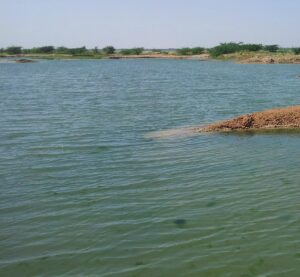
Chilka Lake – Chilka lake is situated in Odisha. It is the largest saltwater lagoon in Asia and the largest coastal lagoon in India. Although it is a brackish water lake (a mixture of fresh and saltwater), salinity levels fluctuate throughout the year. It is a paradise for migratory birds, with more than 160 species visiting the lake during the winter season. The lake is also home to the Irrawaddy dolphins, which are a major tourist attraction.
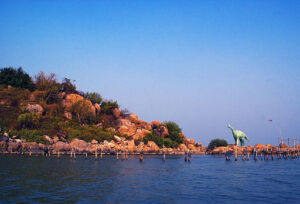
Pangong TSO Lake – Pangong TSO Lake is in Ladakh. yah is a high altitude lake situated at an altitude of more than 4,350 meters. This lake is famous for its amazing beauty and ever-changing colors. The salinity of the lake is very high, making it difficult for life to flourish.
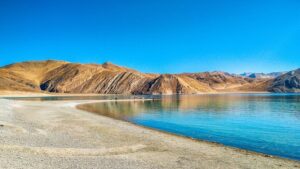
Pulicat Lake – Pulicat Lake is situated in Andhra Pradesh. This lake is the second largest salt water lagoon in India after Chilka Lake. This lake is an important habitat for the birds and the fish. This lake is also a popular spot for boating and fishing.
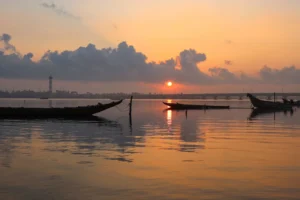
Pachpadra Lake – Pachpadra lake is situated in Rajasthan. It is known for its High sodium chloride content and salt production. This lake is a scenic spot and attracts birdwatchers due to several unique bird species.
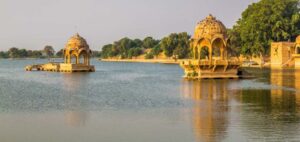
Lonar Lake – Lonar Crater Lake is in Maharashtra. Yah Lake is a unique saline soda lake formed by a meteorite impact. This lake is elliptical in shape and is surrounded by basaltic rocks. The high salinity of the lake supports a unique ecosystem of algae and brine shrimp.
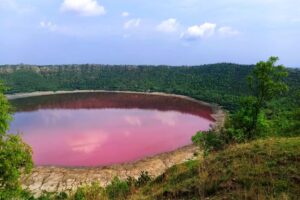
Chilkiya Lake – Chilkiya Lake is a saltwater lake located in Uttarakhand, India. Unlike most lakes, which are freshwater, Chilkiya Lake has salty water. It is surrounded by beautiful hills and forests, making it a peaceful and scenic place to visit. The lake is home to various birds and animals, adding to its natural beauty. People visit Chilkiya Lake to enjoy its calm environment, watch birds, and sometimes even go fishing. The salty water of the lake is unique and makes it different from other lakes in the region. Overall, Chilkiya Lake is a special place where nature’s beauty can be enjoyed in a quiet and serene setting.
Significance of Salt Water Lakes in India
Salt or Saline water lakes, known as reservoirs of ecological and economic value, are of paramount importance in various regions.
- Economically – They serve as natural reserves of various minerals, primarily salt, obtained through the process of evaporation. These vast reserves of water concentrate salts such as sodium chloride, facilitate their extraction for commercial use. Additionally, some saline lakes hold reserves of other precious minerals such as lithium or potash, further increasing their economic attractiveness.
- Ecologically – These aquatic ecosystems promote a specific environment, characterized by high salinity that only a select few organisms can tolerate. In these challenging environments, halophiles, including bacteria and algae, thrive, forming the building blocks of unique food chains. Supporting populations of brine shrimp, insects, and specialized fish, these lakes serve as important habitats and vital passageways for migratory birds such as flamingos.
- Cultural significance – Saltwater lakes hold deep cultural significance, having been deeply intertwined with human history for millennia. Iconic lakes like the Dead Sea hold cultural significance for various religions, while traditional salt production techniques exist around these aquatic wonders.
- Scientifically – The extreme conditions of salt water lakes provide invaluable opportunities to study adaptation mechanisms in life forms and provide important analogs for exploring extraterrestrial environments such as Mars.
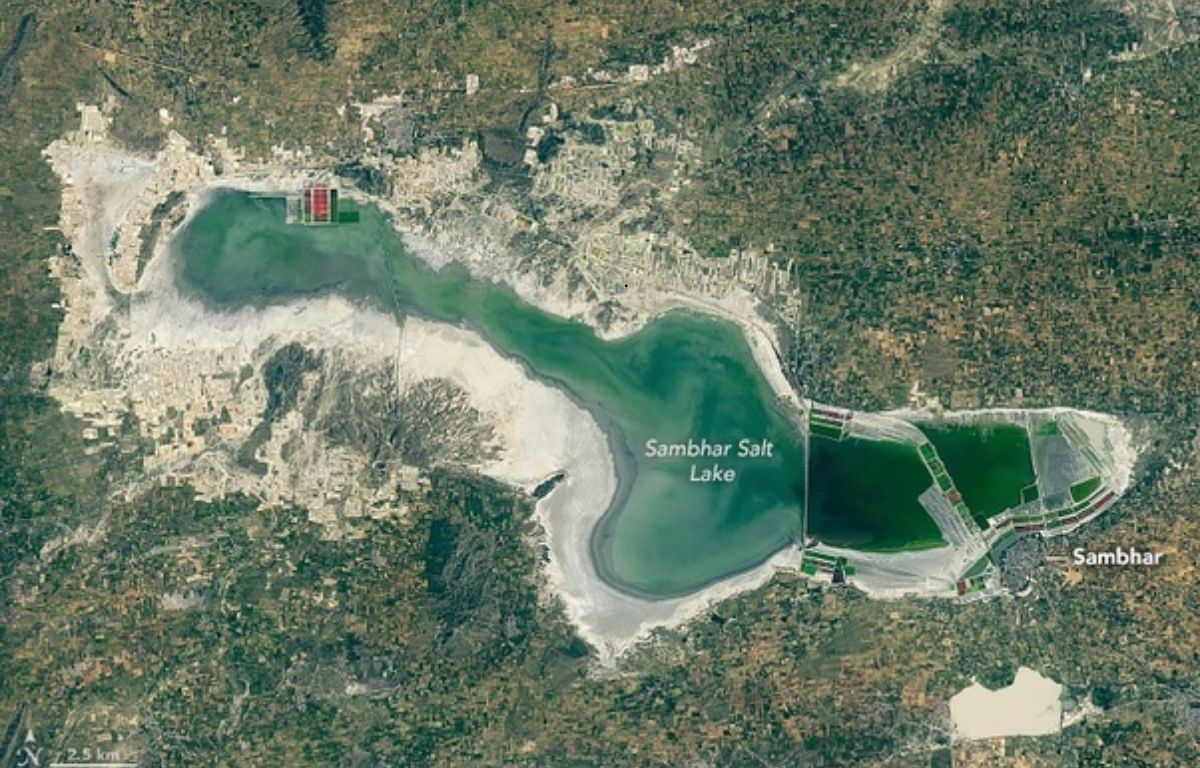

 Largest Freshwater Lake in India
Largest Freshwater Lake in India
 Largest Lake in the World, List, By Area...
Largest Lake in the World, List, By Area...
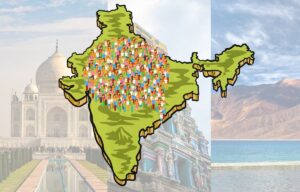 Most Populated State in India, List of T...
Most Populated State in India, List of T...









